Stage Acoustics for Symphony Orchestras – Just Black Magic? Part I
INTRODUCTION
One might claim that the acoustic design of concert halls has been associated with a certain amount of black magic. How we perceive and judge sound is not easy to reduce down to a small set of simple and valid measurable relations, for instance any relationships between the size and shape of a concert hall and the achievement of exciting concerts for both the performers and the audience. Research within auditorium acoustics and psycho acoustics during the last 50 years have documented certain relations that appear valid, but the focus of these investigations has been primarily on the conditions for the listeners, not the performers. Still there are many aspects of acoustic conditions that are not well documented with regard to how they are perceived and unsuccessful designs are not yet fully eliminated. The uncertainties that still remain have led to tendency of copying properties old venues that through experience have proved to be successful, instead of developing new designs never seen before.
From the mid ‘70s to the late ‘80s acoustic conditions for performers were investigated by different research groups. These investigations were groundbreaking at its time and contributed to a better understanding of acoustic conditions from the performers’ point of view. Some of these studies also led to a proposal of objective measures like Gade’s ST measures (see the Further Reading section for more details). The ST measures assess the total level of reflected sound returning back to a musician on stage. The total levels of the reflected sound are summed within certain time intervals where the direction of the arriving reflections is ignored. The ST measures have been the most used objective measure for stage acoustic conditions and is now part of the ISO standard ISO 3382-1:2009 for assessing the acoustic quality of enclosed spaces. After the late ‘80s there were about 15 years without any significant scientific studies looking into acoustic conditions for performers, while the acoustic researchers and consultants reported very varied success with the ST measures. Is it still difficult to draw any lines with confidence between objective description of the stage/venue and ensemble conditions for the orchestral musicians on stage?
In 2005 Mike Barron initiated a 3-year project entitled Improved stage acoustics for performers. This project founded the basis for the author’s PhD thesis working as a Research Officer on the project. The aim for this article is to present the results and concepts from this PhD thesis, which hopefully can contribute to demystify acoustics for performers and point towards new directions for design of stages and performance spaces for symphony orchestras. The main results are presented first. A major finding is that orchestral musicians appear to prefer narrow and high compared to wide and low stage enclosures. The mid section of this article investigates possible explanations for such a preference. If both acousticians and musicians are familiar with these results and the developed concepts it may contribute to a common basis and make it easier for these two groups to communicate and exchange ideas. For more background and references to work by others, please see the Further Reading section.
RESULTS FROM STUDIES OF EXISTING STAGES
Studies of acoustic conditions on stage in general
A questionnaire enquiring about experiences on existing stages in general was distributed to eight professional symphony orchestras within the UK and Norway. The participating orchestras were: BBC Philharmonic, Bournemouth Symphony Orchestra, City of Birmingham Symphony Orchestra, Hallé, London Philharmonic Orchestra, Oslo Philharmonic Orchestra, Royal Philharmonic Orchestra and Trondheim Symphony Orchestra. In total 180 musicians responded. The results showed that most musicians find the acoustic conditions highly relevant for their performance. Table 1 shows the relative frequency of other non-acoustic issues mentioned as a problem. In general the results from the questionnaire study suggest that the players have problems describing in detail how they perceive acoustic conditions and how specific physical or acoustic conditions affect them. The players have focus on their artistic performance led by the conductor – for good reasons – and do not have much training on the science of acoustics. But the reasons they gave for their favourite venue from a musical point of view provided valuable information. Their comments on favourite venue suggest that hearing all other players clearly, well balanced with the sound of one’s own instrument is essential for good stage acoustic conditions. Additionally, the audibility and quality of the acoustic response from the main auditorium (audience area) appears important for the musicians. This indicates that the players communicate acoustically at two different ‘levels’: with each other and with the audience area. The sensation of acoustic contact with the audience area was by several players described as ‘projection’. The string players are found to frequently have problems hearing within their own group across the stage or experiencing excess delay of the sound from other string players at the opposite side of the stage. Brass and percussion are reported as often being too loud by the strings, woodwinds and other brass players.
Regarding the benefits of hearing the acoustic response from the main auditorium, around half of the players find this response relevant, the half do not. But when the players were asked to judge the overall acoustic impression of specific stages, venues that appeared to lack a sufficient level of reverberant acoustic response from the main auditorium were given a low score by most players. The players complained about lacking ‘bloom’ and/or ‘projection’ for these types of venues. This indicates that the acoustic response from the main auditorium may often be taken as granted as long as it is at an optimum level (not too low or too high). It may also suggest that the players have different approaches to how they relate to and take use of acoustic conditions. Many players comment that the acoustic response from the main auditorium is too late to be of any use. Others comment that this response is valuable for intonation and balancing with other instruments and instrument groups. Again, it appears that the musicians have learned to relate to acoustic conditions on a more subconscious level while focusing on the musical aspects, and therefore struggle to give exact answers to such questions.
Table 1: Relative frequency of non-acoustic issues mentioned by the players.
Regarding staging conditions, the players were found to prefer a flexible riser system on stage and to have enough space available on stage to avoid sitting very close to loud instruments. A semi-circular (circular) riser system was found to be most popular among the string and percussion players, while risers at the back half of the stage were found most popular among the brass and woodwind players. Figure 1 shows these two different riser layouts.
For successful design of stages we need to know how the acoustic conditions relate to the important subjective aspects described by the musicians (reported above). Consequently we will also need to know what physical properties are necessary to create the wanted acoustic conditions. This is not a simple task, but the results from the questionnaires indicate that the ability to hear the others clearly appears to relate to general perceptual effects like masking, the cocktail-party effect and the precedence effect. See Fact box 1 for a brief description of how these perceptual effects appear to be controlled by physical acoustic conditions, combined with some information on fundamental sound propagation.
Studies of specific stages
Two different studies of existing concert hall stages were carried out within the 3-year study. In both studies, only stages the musicians had visited on a regular basis were included to avoid single-occasion experiences having too much emphasis on their judgments. The participating musicians also played regularly in other venues, making it easier for them to have some valid perspective for their judgments. Judgments of home venues were excluded due to risk of adaptation to a venue one is extremely familiar with and have a special relation to. Figure 2 shows the stage enclosures for the eight specific venues studied in detail where the Bournemouth Symphony Orchestra performs regularly. The rating of these eight venues regarding overall acoustic impression was, with the most popular first: BA, CD, BC, EU, PG, PL, BP and WP. See Figure 2 regarding abbreviation of the venue name. BP and WP are proscenium stage theatres with sound absorbing drapes on stage.
Figure 2: Images of the halls regularly visited by the Bournemouth Symphony Orchestra.
Both standard acoustic and architectural measures were obtained and compared to the players’ judgments of the acoustic conditions. For the detailed study standard acoustic measures included the ST measures as well as reverberation time T and measures evaluating levels and energy ratios within the time-dependent room acoustic response. For instance the measure Gl (Glate) sums the level of all reflections appearing more than 80 ms (corresponding to the length of a sixteenth note or semiquaver at 187 beats per minute [presto]) after the arrival of the direct sound, representing the level of the reverberant sound in the room. The measure C80 compares energy of the acoustic response arriving before and after 80 ms. The room acoustic responses on stage and in the audience area were obtained with a monophonic microphone without a full symphony orchestra on stage (only fitted with chairs) and with an unoccupied audience area. The sound emitted from the loudspeaker had very similar levels in all directions from the sound and the microphone had very similar sensitivity in all directions (omnidirectional transducers). A set of proposed architectural measures were based on architectural drawings and were defined as: the distance between reflecting surfaces at the sides for the strings players (Wrs), distance up to a surface likely to reflect brass down towards strings (Hrb) and the total depth of the stage (D). The ratios Hrb/Wrs and D/Wrs were also studied. See Fact box 2 below for more detailed information regarding the proposed architectural measures.
The results from these studies showed that the architectural measures were found more relevant than the acoustic measures regarding perceived acoustic communication between players (being able to hear all other players clearly, well balanced with sound from one’s own instrument). The acoustic measures T, C80 and in particular Gl were found most relevant regarding perceived conditions – mostly regarding audibility of a reverberant acoustic response in general. If including only purpose-built halls where the level of reverberant sound appeared to be within an optimal range, the acoustic measures included in the study did not show any significant subjective relevance. On the contrary, the purpose-built halls with high values of Hrb/Wrs (narrow and high stage enclosures) were find to be significantly more popular compared to halls having low values of Hrb/Wrs (wide and low stage enclosure). Only a limited number of halls were included, totally 20 halls. For specific stages it is difficult to isolate the effect of different contributing factors, as well as obtaining quantitative measures of the complex acoustic and architectural design. The proposed architectural measures will only work as indicators of the real and significantly more complex conditions. It is therefore difficult to fully prove scientifically relations between specific acoustic designs and perceived conditions. Existing acoustic measures are very simplified representations of the complex acoustic response. For instance, the direction of reflected sound is as mentioned fully ignored in the acoustic measures included in the study. Additionally, the acoustic measures were based on the acoustic response on stage without the orchestra present. Results from physical scale model studies included in the project suggest that the orchestra has a significant effect on acoustic conditions on stage. Without the orchestra present on stage the differences in the acoustic response between different stages are found to be reduced, making it more difficult to see clear objective differences between stages. It therefore makes sense that simple acoustic measures are mainly relevant regarding overall and rough measures of the acoustic response, like the audibility of the reverberant acoustic response in general that is likely to contribute to a sense of what the players talk of as ‘bloom’ – that the sound of the instrument is enhanced by reflected sound. For studying such acoustical aspects, investigating the Strength of the late reflected sound, Glate, both on stage and in the audience area appears most relevant. Measuring both on stage and in the audience area enables an estimate of the dominating direction of late sound on stage, which appears relevant for acoustic contact with the audience area. This measure requires the measurement equipment to be calibrated for absolute levels, but apart from that it is a straightforward measure that appears sufficiently valid without a full orchestra on stage. If we were able to assess the direction of early and late reflections with a full symphony orchestra on stage, the measured acoustic responses and calculated acoustic measures may have proved more relevant for the purpose-built halls.
To search for reasons for why a narrow and high stage enclosure could be preferable, the approach has been to study the physical/acoustic conditions imposed by a symphony orchestra itself. These acoustic conditions are then compared to knowledge about perceptual effects (masking, the precedence effect and the cocktail-party effect) and musical/performance aspects. Finally there is a discussion of how the design of the stage, stage enclosure and the venue overall may be designed to provide acceptable conditions for a symphony orchestra.
ACOUSTICAL CONDITIONS IMPOSED BY A SYMPHONY ORCHESTRA
The large number of players and large distances between many players within a symphony orchestra lead to acoustic conditions which are different from other types of ensembles. This suggests that the design of the stage enclosure in concert halls for symphonic music must give priority to aid the acoustic challenges imposed by a symphony orchestra. The apparent level and time arrival differences for the sound from different players are in this section treated purely physically.
Sound pressure level differences between instruments
Let us have a look a symphony orchestra on stage without any concert hall or any stage enclosure present. Normally the string players occupy the front half of the stage, while the woodwind, brass and percussion players occupy the back half. The arrangement of violins, violas, cellos and double bass will depend on the orchestra arrangement (American, German or other), see Figure 3 for details. On most stages purpose-built for a symphony orchestra the stage has risers where woodwind, brass and percussion players sit elevated above the string players (see Figure 1). The risers lead to unobstructed direct sound paths from these instruments towards the audience and from the strings towards the percussion and brass players. The risers also improve visual communication. Some concert hall stages have a semi-circular riser system where the outmost string players also sit on risers (see Figure 1). This leads to less obstructed direct sound paths and visual communication also for the outmost strings players, which may explain the questionnaire results that showed string players’ preference for a semi-circular riser system. With a symphony orchestra on stage with no stage enclosure or main auditorium there will not only be the direct sound, but also the reflection from the stage floor and objects on stage (musicians, instruments and music stands). The combined level of these sound components on stage has been called the within-orchestra sound level.
The typical variation of the within-orchestra sound level within a symphony orchestra is illustrated in Figure 4. The within-orchestra sound levels will typically be low between string players far apart from each other and for string sound towards the brass and percussion sections. The low within-orchestra sound levels are due to both spherical dispersion of the sound energy (the inverse-square law) and the obstruction effect from other musicians, instruments and music stands blocking the direct sound and floor reflection path. The obstruction effect is significant at frequencies above 500 Hz based on physical scale model studies included in the project. At a frequency of 2 kHz, the scale model results suggest that the obstruction effect leads to an attenuation of approximately 10 dB for players 12 m apart from each other. The attenuation due to spherical dispersion results in an attenuation of approximately 22 dB for a player at 12 m distance compared 1 m distance. Consequently, for such players without any circular riser system, the apparent attenuation for another string player 12 m apart is approximately 32 dB attenuated relative to another string player at 1 m distance. The high within-orchestra level from percussion, brass and woodwind on the other hand is caused by shorter distances and the use of risers. If taking into account also the acoustic sound power radiated by each type of instruments, the level balance will typically become even more skewed due to the high acoustic power radiated by the percussion and brass instruments.
The delay of direct sound between players
The musicians need to take into account the synchronicity of sound as heard by the audience. Players at the back of the stage normally need to compensate for their sound being physically delayed relative to the players at the front part of the stage. Players sitting across the stage must start their note at the same time; otherwise the sound will not arrive synchronised for the audience. The distance between players across the stage leads to significant delay of the direct sound mutually between these players – approximately 3 ms delay is added per 1 m propagated. If the players wait for each other based on what they hear, the orchestra risks slowing down the tempo. Visual communication between each other and with the conductor will therefore be essential to keep synchronicity across the stage. The maximum delay of direct that could be experienced within a symphony orchestra will be approximately 60 ms. This corresponds with a maximum distance between players equal to approximately 21 m (diagonally across a 16 m wide and 12 m deep orchestra. Figure 5 illustrates approximate differences of delay on the direct sound between individual musicians in extreme cases, as a consequence of the distance between players and how the players within a symphony orchestra synchronise relative to each other. The three players at the bottom (stage front) in Figure 5 are within the string section, while the two players on top (back of stage) are typically brass (or percussion). The string players M and S are presumed to start their notes simultaneously while the brass and percussion are playing ahead of the beat, so that they are synchronised with each string player at their onset (hence 0 ms delay for players M and S). However for the mid string player M, sound from the colleague at the left side of the stage is delayed about 23 ms (milliseconds), whereas for player S at the right side, sound from the colleague on the opposite side of the stage is delayed about 46 ms. In practice the delays will not be as precise as stipulated here, only the same tendencies regarding differences of delays between instrument groups may be found in practice. When several musicians play in unison there will be not as extreme time delays between opposite sides of the stage.
FURTHER READING
The content of this article is based mainly on chapters 3, 5 and 8 from the author’s PhD thesis. The PhD thesis is freely available at http://stageac.wordpress.com/phd/. This website also contains conference papers, papers within the field of stage acoustics by others which are freely available online and the author’s contact details. Some of the references relevant to this article follow below. Please see the PhD thesis for a more complete bibliography.
Dammerud, J. J. 2009. Stage Acoustics for Symphony Orchestras in Concert Halls. Ph.D. thesis, University of Bath, England. (See http://stageac.wordpress.com/phd/)
Dammerud, J. J., Barron, M., Kahle E. 2010. Objective assessment of acoustic conditions on concert hall stages – limitations and new strategies, Proc. ISRA 2010, Melbourne, Paper O1a. (See http://stageac.wordpress.com/articles/)
Gade, A. C. 1989. Investigations of Musicians’ Room Acoustic Conditions in Concert Halls. Part I: Methods and Laboratory Experiments. Acustica, 65, 193–203. (See http://www.gade-mortensen.dk/files/downloads.html)
Gade, A. C. 1989. Investigations of Musicians’ Room Acoustic Conditions in Concert Halls. Part II: Field Experiments and Synthesis of Results. Acustica, 69, 249–262. (See http://www.gade-mortensen.dk/files/downloads.html)
Meyer, J. 1987. Gedanken zur Sitzordnung der Streicher im Orchester (Thoughts on arrangement of the string section in orchestra). Das Orchester, 3, 249–256.
Meyer, J. 2008. Acoustical Demands for the Conductor’s Location. Journal of Building Acoustics, 15(2), 79–95.
Meyer, J. 2009. Acoustics and the Performance of Music. 5th edn. New York: Springer-Verlag.
Ueno, K., Tachibana, H. 2005. Cognitive modeling of musicians’ perception in concert halls. Acoust.Sci.& Tech., 26(2), 156–161. (See http://www.jstage.jst.go.jp/article/ast/26/2/156/_pdf)
Berntson, A., Andersson, J. 2007. Investigations of stage acoustics for a symphony orchestra. In: Proc.ISRA 2007, Seville. Paper S32. See http://www.artifon.com/pdf/ISRA2007_Stage_Acoustics_full_paper_final.pdf

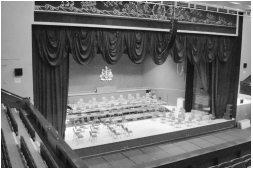
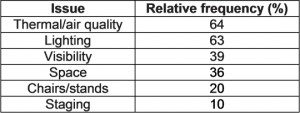

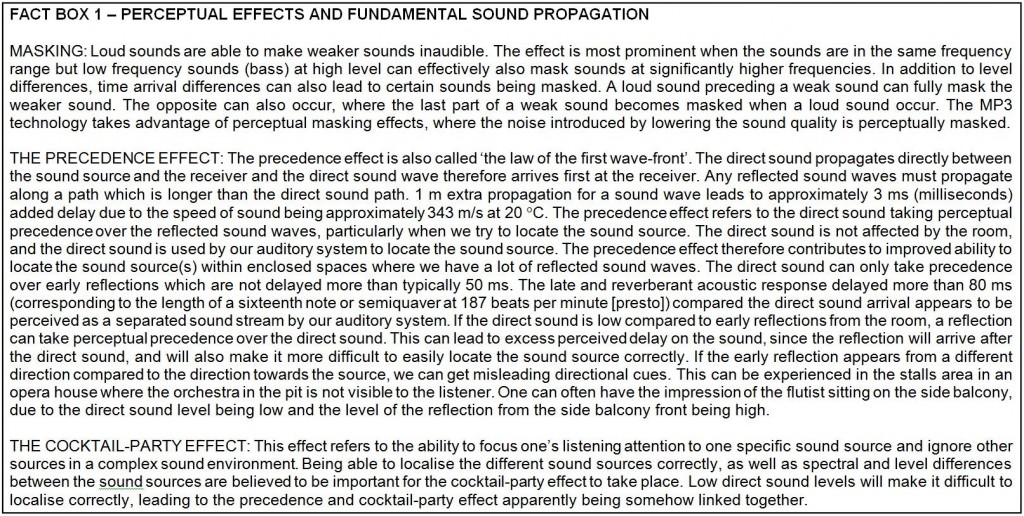
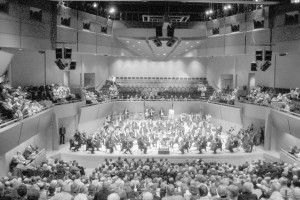
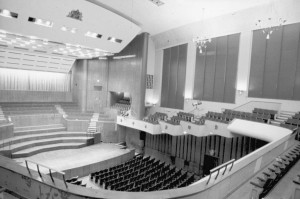
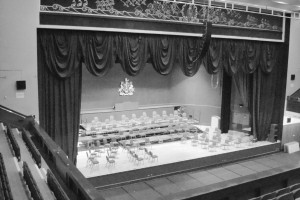
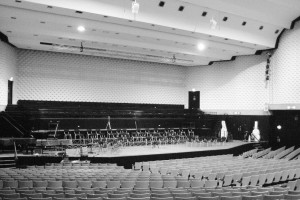
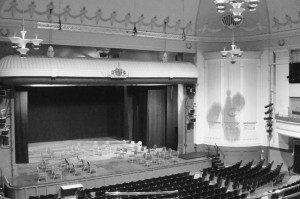
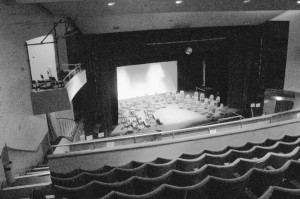
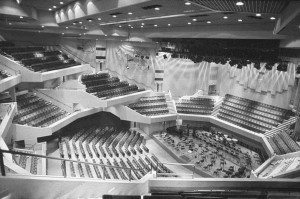
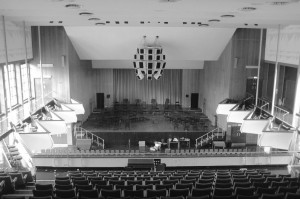
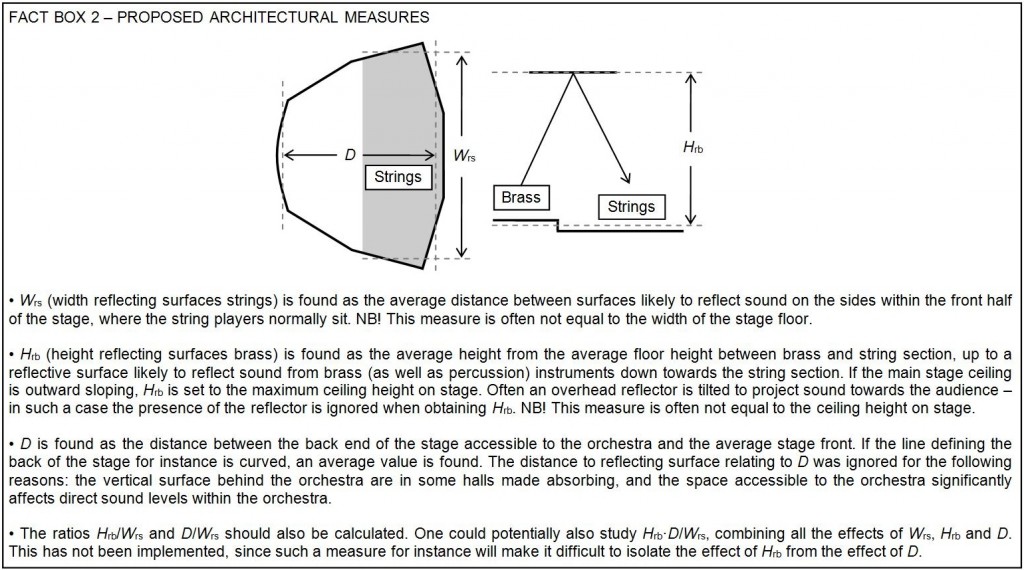



No comments yet.
Add your comment